The best crossbow broadhead for deer in 2024 is the Muzzy Trocar for its incomparable penetration and accuracy on large game.
Once so simple, choosing your crossbow broadhead has become far more complex over the past years, with the introduction of new technology to add more ‘functionality’ to the best crossbow broadheads available.
Choosing the right broadhead is a personal decision, not only depending on the shooting conditions (distance, wind), but also personal preference regarding desired penetration, accuracy, wound channel and blood trail.
You can only glean so much information online, so honestly, my best advice is to read the reviews, and then get out there and try the different broadheads until you find one that you love.
Our crossbow broadheads review covers the:
- NAP Spitfire Crossbow
- Swhacker 100-grain 2-inch-cut Mechanical Broadheads
- G5 Outdoors Montec Fixed-blade Broadheads
- Excalibur Boltcutter Fixed-blade Broadheads
- Muzzy Trocar Fixed-blade Broadheads
Best Crossbow Broadheads Features
First of all I’ve rounded up some definitions of terms you’ll hear often when talking about crossbow broadheads throughout the reviews:
Cutting diameter
It refers to the minimum potential wound size a broadhead can cause, or in other words the width measurement from blade tip edge to blade tip edge.
In theory a wider diameter has more chance of damaging important tissue and reaching vital organs, although there is a possible trade off with accuracy (more surface area for the wind to take hold) and penetration (less likely to enter the animal so far).
Shock collars
A small ring placed below the broadhead where it fixes to the arrow which a) keeps the broadhead steadily in place and b) absorbs shock upon impact in order to protect the broadhead.
Grain weight
Broadhead weight is measured in grains, and most will come in both 100-grain and 125-grain options, maybe even up to 150. I generally recommend the 100-grain for best accuracy over 20-50 yards, and the 125-150s for upwards of 50-60.
The 125-grain will also provide more penetration on bigger game, and given the shorter arrows used for crossbows, can provide more weight to the front of the arrow (“front-over-center” balance), maintaining stability and reducing cross-wind influence.
Blade Tip
There are two options here, either chisel-tips which are designed for a big impact on big game, with thick hides – fur, fat and bone. Or, you can opt for the cut-on-contact tip, which aims to slice immediately with deep penetration. See informative discussion here.
Number of blades
Broadheads generally come in one, two or three-blade variations. Arguably, the two-blade achieves better penetration, and the three-blade increases the wound channel. For this reason (but not always), you would do better with two-blades for bigger game to penetrate deep and split bone.
Honestly though, there are other more important factors such as where you hit the prey, with what force, cutting diameter, what type of broadhead, and at what angle.
Fixed-blade or mechanical
Fixed-blades are traditional arrowheads where the broadhead blade is firmly attached to the head. There are also some ‘removable’ fixed-blade broadheads which allow you to replace a single blade, rather than the whole broadhead.
Mechanical broadheads have retractable blades which come out on impact, making the arrow flight as uninterrupted and aerodynamic as possible.
Fixed-blade or mechanical crossbow broadheads: what should I use?
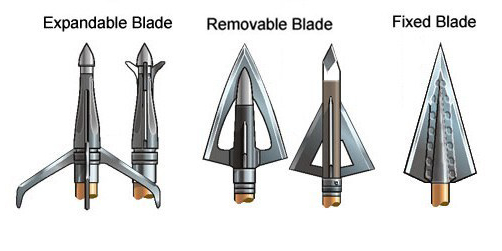
Up until recently I’d have said that the fixed-blade won hands down every time. However, the mechanical broadhead is becoming more and more effective, giving experienced hunters a headache when faced with the choice.
Although mechanical broadheads are good 90% of the time, I know few people that would opt for a mechanical broadhead when faced with that really tough, make or break shot to take down the biggest game – it’s just too unreliable.
That said, maybe this perception is changing little by little, so let’s look at the facts regarding fixed-blade and mechanical broadheads.
How do mechanical broadheads work?
When an arrow is flying through the air towards its target, the more surface area that the broadhead has, the more susceptible to influence from crosswinds it will be, taking it off-course.
Step up the mechanical broadhead.
The idea of a mechanical broadhead is to reduce the surface area of the broadhead and improve on aerodynamic drag, by retracting the blades until the moment of impact, upon which the blades deploy to further increase the damage.
If the blades are withdrawn during flight, this should also improve concentricity. Concentricity is essentially the arrow spinning perfectly through the air around its centre, ensuring that the mechanical blades don’t deploy while in the air, before impact.
Ideally an arrow is steered by its fletching at the back, however what’s known as planing can occur, where the wide-surface-area broadhead takes control of the arrow’s flight path, causing long-distance inefficiencies.
A mechanical broadhead is forgiving on beginner hunters or poorly tuned crossbows.
It sounds wonderful, however mechanical broadheads have their drawbacks. These mechanical heads have a tendency not to deploy, or may come apart upon impact, ultimately failing to penetrate sufficiently and leaving the animal in distress, or getting away.
Fixed-blade broadheads
What the fixed-blade makes up for is clinical impact, or in other words strength and penetration.
These days fixed-heads have excellent designs, which make them exceptionally aerodynamic to the point where they may even match mechanical broadheads, a lot of the time.
A question of quality
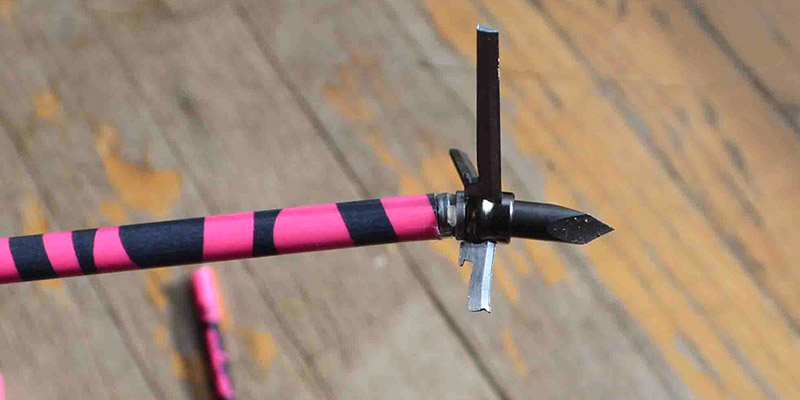
Mechanical broadheads generally fail for one of two reasons.
Either the blades do not retract, and therefore they remain exposed during the flight, subjecting the arrow to influence by the wind.
Or they malfunction on impact. A high-quality design uses high-quality mechanical blades which are better fixed to the broadhead, or may even be heat-treated so that they bend, instead of snapping off.
Making sure that the broadheads you purchase are made of steel instead of aluminium will help with concentricity, too.
Choosing the best crossbow broadheads for your crossbow
The best crossbow broadheads are designed with the following functions in mind:
Penetration
An arrow may kill in any one of the following ways:
- Blood loss
- Damage to the nervous system
- Destruction of vital organs
- Septicemia or asphyxiation
The further through an animal the projectile goes, the more likely the hunter to achieve their goal of an ethical kill.
Questions to ask yourself:
- How deep into the animal does your arrow seat itself?
- Does it go all the way through, causing faster bleeding and a faster, more ethical death?
- How does the crossbow broadhead contribute to that penetration?
Accuracy
Accuracy speaks for itself. we want to be accurate to not only hit our prey, but hit it exactly where we want to for an ethical kill.
Questions to ask yourself when reviewing the best crossbow broadheads:
- How well does the bolt and broadhead leave the crossbow?
- How many touch points are there with the crossbow which could alter its course on the way out?
- Does the broadhead’s form (surface area) make it more or less susceptible to influence by the conditions, such as wind or rain?
- Once the bolt leaves the crossbow, how does the broadhead affect the bolt’s concentricity? Does it spin more or less evenly for a true aim? Mechanical broadheads are particularly guilty of unbalancing an arrow.
Wound channel
Wound channel refers to the size of the channel made by the arrow, through the prey. An arrow kills in any one of the following ways:
- Blood loss
- Damage to the nervous system
- Destruction of vital organs
- Septicemia or asphyxiation
For an ethical kill, a large wound channel is more likely to achieve its goal. Does the crossbow broadhead help to achieve this?
Blood trail
More blood makes it easier to track game after you shoot them. The best designed crossbow broadheads, aside from causing a large wound channel, maintain heavy blood loss so as to track the animal easily.
No Spam! Just Pure Hunting, Survival & Outdoors Goodness in your Inbox 🏹
Best Crossbow Broadhead in 2024 Reviews
The following best crossbow broadheads ratings are in no particular order, as the best depends on the game you are hunting, expected shooting distances and your experience.
NAP Spitfire Crossbow Review
Use on: small to medium-sized game over all distances
If you’re looking for a mechanical broadhead which flies like a field point and leaves a great blood trail, then the NAP Spitfire could well be the broadhead for you.
When I tested them, I had good penetration working with the 125-gr, maybe as it has a slightly smaller cutting diameter of 1.5 inches.
This nonetheless provides a reasonable wound channel and large enough blood trail to track the animal. If you get good contact though it won’t get very far thanks to the ‘Trophy Tip’ which is designed to penetrate on larger game.
Nonetheless, I’d probably use these broadheads on small to medium-sized game. The combination of the penetrative tip, decent cutting diameter and mechanical action make it perfect for deer hunting.
It has three cut-on-contact diamize sharpened blades, and the ferrule on the spitfire has microgrooves for enhanced accuracy and penetration.
Pros
- best mechanical broadhead for crossbow
- Best crossbow broadheads for deer
- Decent blood trail
Cons
- The blades have a tendency to open while stalking game
Swhacker 100-grain 2-inch-cut Mechanical Broadheads Review
Use on: small to medium-sized game over all distances
The Swhacker set of 3 broadheads are dependable mechanical broadheads, almost guaranteed to deploy thanks to their solid design.
It has a hardened high-carbon-steel, cut-on-contact, two-blade point which is razor sharp. Once you look past the initial point, you’ll find a first set of wing blades designed to cut straight through hide and the first set of ribs.
Once contact has been made, this first set of blades helps to deploy the second set of edges which don’t touch anything during initial penetration, instead opening only once inside the game, to wreak havoc on the animal’s internal organs. You won’t see too many animals make it more than 100 yards before coming to a halt.
On top of this, the Swhacker has a massive cutting diameter of 2 inches. Even if your aim is slightly off, you’re bound to hit a vital organ and bring your game down.
I found the broadhead to demonstrate solid penetration and durability, and I even found (impressively) that it could hang onto the target when tested at angles, too.
I’d use this happily on any small or medium-sized game over all distances. Find out more about the Swhacker brand and all their crossbow broadheads.
Pros
- Great penetration from angles
- Wide cutting diameter
- Unique design
Cons
- Accuracy: had strange outlier from grouping during testing which was so disappointing as I really liked this broadhead
G5 Outdoors Montec Fixed-blade Broadheads Review
Use on: medium to large-sized game over all distances
I would be happy to use these G5 Montec broadheads on deer, no problem. In fact, you could even make a case for use on bear and elk, as the blade angle of the Montec is designed for solid penetration, along with a thinner, more penetrative cutting diameter of 1 1/16 inches.
Despite a reduced wound channel, you’ll get a decent blood trail from heavy penetration which should easily make its way through the animal, especially over shorter distances.
Often overlooked, it’s a really simple broadhead to use – you just screw it on and shoot, and it also allows for easy sharpening, meaning you can get good (re)use out of it.
This was important, as I found that it could definitely do with a little more sharpening straight out of the box.
This 100% stainless steel broadhead is spin-tested to ensure the required weight and centricity to perform over long distances.
Pros
- One solid unbreakable piece
- Good for small, medium and large game
Cons
- Blunted out of the box
Excalibur Boltcutter Fixed-blade Broadheads Review
Use on: medium to large-sized game over all distances
I really like the Excalibur Boltcutter, in fact until I did all these recent tests it was (and maybe still will be) my fallback broadhead, whenever I wanted to feel 100% confident.
It’s got a 3-blade head with a small 1 1/16-inch diameter to maximize penetration at all distances; it’s deadly for the very biggest game out there.
It has been designed to improve accuracy over 300 FPS, stabilizing quickly as it leaves the bow.
It’s made of stainless steel to withstand high impacts and improve penetration, and it represents the perfect blend of strength, speed and accuracy.
It’s one drawback is that it costs a little more than most blades, but you can replace the individual blades, or even reuse the blades by sharpening the whole head to offset the cost and get more use out of them.
Pros
- Optimized penetration
- Enhanced accuracy over distances
- withstands high impact
- streamlined design
Cons
- Expensive
Muzzy Trocar Fixed-blade Review
Use on: medium to large-sized game over all distances
The Muzzy Trocar is a three-blade fixed broadhead with a short stubby nose. The arrowhead has less surface area allowing for better arrow flight.
The hardened steel Trocar head-tip achieves extreme penetration, and the ferrule – built from solid steel – won’t buckle when striking bone, making it the perfect choice for large game.
It doesn’t compromise on accuracy either, thanks to the special right-helix design for solid stability; Muzzy claim they fly just like field tips, and from our experience with them, they aren’t wrong. When I tested it this broadhead achieved both the insane grouping, and massive penetration.
I like this broadhead because it’s completely customizable too. You can change the blade between three cutting diameters, between 1 inch and 1 1/14inches.
Pros
- Best crossbow broadheads for accuracy
- Best crossbow broadheads for penetration
Cons
- N/A
Conclusion: the best crossbow broadheads
I found the level to be really high, and any misgivings that I had in the past about mechanical broadheads are slowly going away.
I’d even go so far as to recommend the Swhacker mechanical broadhead as the best crossbow broadheads for small game over any distance, with the Spitfire not far behind.
I liked the mechanical so much with small game because pretty much any hit with the two-inch cutting diameter would be enough to take down the animal, and the arrows would be forgiving thanks to their improved aerodynamicity.
There’s a good argument for the Swhacker or Spitfire moving up to medium-sized game like deer too. I think this is then a question of personal preference, where you should really try out both types and see what works with your crossbow specifications and personal needs.
When I moved up to large game, I decided that you can’t look any further than the Muzzy Trocar. It won hands down for penetration and accuracy, which for me are the two most important factors when shooting big game over any distance.

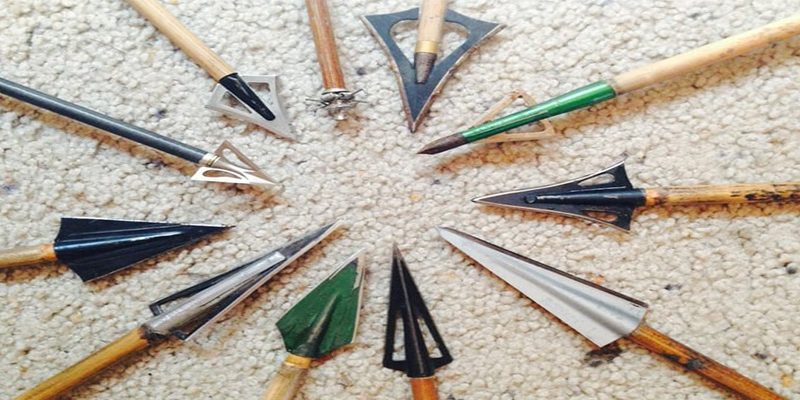





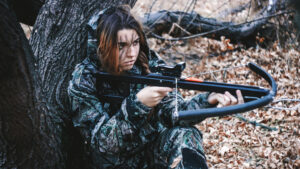
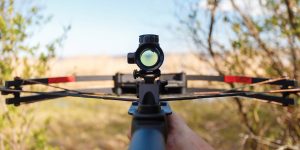
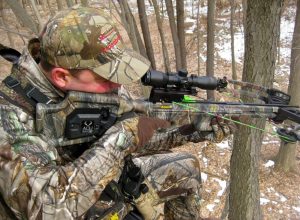
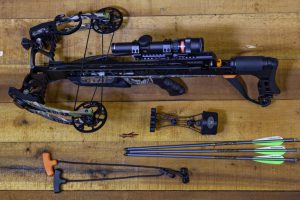
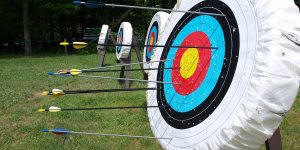
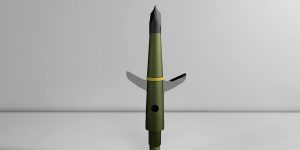
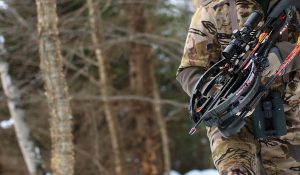
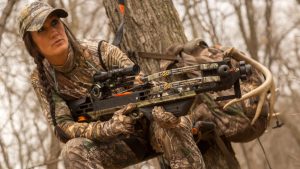

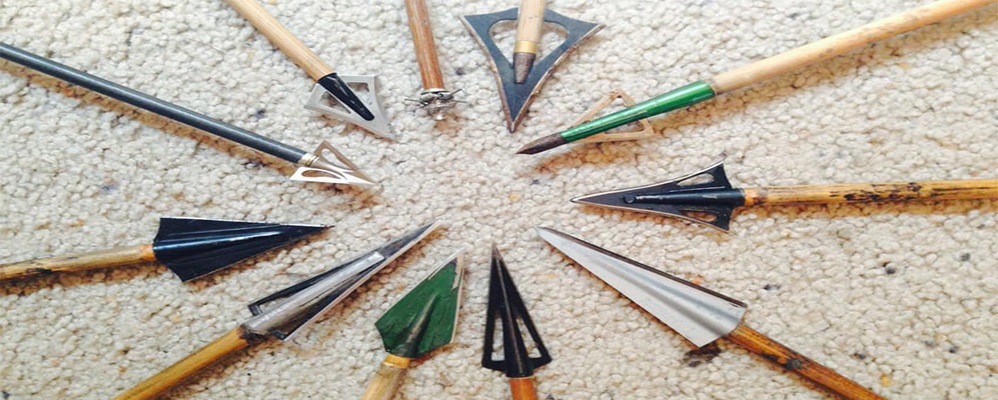
4 thoughts on “9 Best Crossbow Broadheads for Deer in 2024 – Unbiased, Expert Ratings”
Hi, Jack
Thank you for the information.I am 80 years old. New to hunting with a Cross Bow.
Two artificial knees makes it had to draw any bow. I bought a Horton bow years ago. Now hard to cock. Modified a Ten Point cocking device. Works great! My first shot at a deer with it was 2 days ago.
Large, heavy doe. The bolt went through a front leg then both sides of the rib cage. Dead!. The broadhead: Grimson Talon Hyper Speed XT. Spin O Tite.Spiral Wound Channel. Do you know it? I have 1 left. 2 entrance wounds. 2 exit wounds. Shot was from 50-55 yards. Doug Camplin gdcampli@gmail.com
Hi Doug, it’s never too late to get into crossbow hunting! Sounds like you’ve found a nice work around for drawing with the cocking device, I like it.
The Hyper Speeds are a solid broadhead. The Spin-Tite Airfoil Technology creates a spiral wound channel and coupled with the wide cutting diameter you often get a heavy blood trail. I believe that Crimson Talon is the first brand to make a broadhead specifically for the crossbow, and aside from your positive feedback I’ve heard others have been very happy too. I’ve also been told that they fly true even in tricky wind conditions. If you have any extra feedback I’d love to hear more on your experience!
Thanks for leaving a comment Doug.
Jack
I’m 74 years old have cancer but I’m an avid hunter and I can still hunt going to start using a raven 10 crossbow what is the best straighter shooting fix blade Broadhead this weapon? I’ve never used a crossbow in my life but I have permits for three different states to use it, thank you very much Mike
Howdy Mike, first things first, I’m sorry to hear you’re fighting cancer buddy, but it sounds like you’re doing it the right way – staying fit and keeping at hunting, something you love.
I’d say that finding the best broadhead for you, the game you’re hunting, your crossbow, and your bolts, is very personal and therefore a process of testing a few out and seeing how you like them. That said, I’d suggest getting yourself some of the Muzzy Trocars on one hand, and on the other there’s a great thread from a few people shooting Ravin R9s, R10s and R20s here where people share their favorite setups. I’m pretty confident you’ll enjoy the read and have a few others you can compare with the Trocar.
Thanks for reading. Let me know how you get on!
Jack